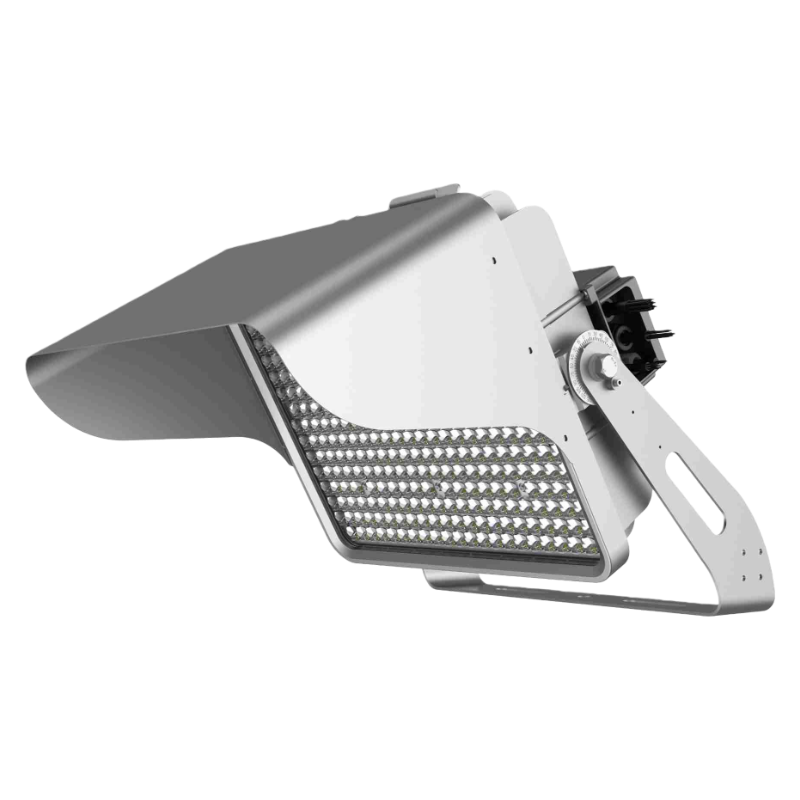Lighting Requirements for Real & Virtual Golf
When considering the lighting of sports facilities, more specifically, golf courses, it’s not just a case of looking at how they affect gameplay. Commercial golf lighting is a substantial investment for commercial property owners and facility managers, regardless of whether they’re managing a championship-level course, an indoor virtual experience with simulation software, or a driving range.
Understanding the lighting needs of both real and digital golf environments is pivotal for creating spaces that are designed with the player in mind. Consider the following guidance when planning your next facility upgrade or project.
Lighting for Indoor Golf Facilities
Indoor golf facilities, such as driving ranges, simulators, and training centers, require bespoke commercial lighting solutions that account for both visual comfort and accuracy. Unlike outdoor golf links courses or mini-golf ranges, where natural light often supplements artificial LED lights, indoor spaces rely on well-designed and professionally engineered products.
As a general rule of thumb, maintaining levels between 300 and 500 lux (measurement of light intensity) ensures clarity in ball tracking and target visibility. The uniformity ratio should achieve at least 0.6 to eliminate shadows that can interfere with swing mechanics and ball flight assessment. Linear high bay LED fixtures with selectable power options provide the flexibility needed to achieve these standards while accommodating different ceiling heights and space configurations.

Training facilities that incorporate professional simulation software are becoming more common. Golf training aids like made-to-measure golf clubs, as well as accurate swing mechanics analysis equipment, and even practice nets, are also being deployed regularly in these facilities. Companies like Golf Swing Systems have demonstrated how golf nets and other aids can be a vital addition to any practice environment, but only with optimal, consistent, and flicker-free lighting that won’t interfere with simulators’ motion sensors or swing analysis technology.
Environments that utilize professional golf simulators demand 500 to 750 lux with exceptional uniformity ratios of 0.7 or above. This is to ensure accurate tracking of shots, as well as creating realistic, immersive experiences. Color rendering index (CRI) becomes critical in simulator spaces, with values of 80 or above necessary to maintain natural color perception for both the golfer and any camera systems capturing swing data.
Lighting for Outdoor Golf Courses
Traditional golf courses pose a handful of complex lighting challenges that vary from area to area. For instance, tee boxes require focused illumination of 200-300 lux to ensure golfers can clearly see ball placement and target alignment. LED floodlights with adjustable beam angles provide the directionality needed while minimizing glare that could affect any neighboring playing areas.
Fairway lighting demands wider, more widespread coverage at moderate levels (such as 100-200 lux) to maintain playability without overwhelming the natural surroundings. High-mast LED light systems placed along the edges of the fairway can deliver the desired illumination with fewer total fixtures, which ultimately won’t intrude or interfere with any other lighting solution.
Golf greens represent the most challenging lighting application, requiring consistent coverage at 300-500 lux to ensure the terrain is well-lit for accurate putting. Fixtures should be placed around the greens to ensure they don’t cause glare that affects golfers’ vision while putting, but also allow for multiple viewing angles.
Important Considerations for Golf Lighting
Modern LED technology must address both the issues of operational costs and long-term stability. LED lighting systems can reduce energy consumption by 50-70% versus metal halide or sodium fixtures, while offering exceptional, uninterrupted light quality, according to data from the Climate Group. LED systems also often exceed 100,000 hours of operation, requiring minimal maintenance and rare replacements. For golf facilities that need fixed, steady access to fixtures, these solutions may be ideal. The smart lighting controls integrated with modern LED systems allow facilities managers to adjust levels based on weather conditions, activities, foot traffic, and usage patterns.
Professional golf lighting installations must meet specific industry standards, depending on the intended purpose. For example, recreational facilities typically operate within the range of 200 and 500 lux, while championship tournament-level installations could see the range sit between 750 and 1,200, given the increase in spectator capacity and course length.
As far as golf lighting design is concerned, glare and brightness control become vital. These conditions can impair player performance and pose safety hazards. Luckily, modern LED fixtures offer advanced optics and shielding to direct light precisely where needed to minimize the spillage of light. In indoor facilities, it’s important to ensure wire guards and protection are installed around fixtures that could be encumbered by golf balls mid-flight.
Golf Lighting Maintenance and Installation
Consider the following when it comes to golf lighting placement, upkeep and long-term stability and performance:
- Mounting heights
- Beam patterns
- Grounding
- Weather protection
- Cleaning
- Optical component inspections
- Photometric testing
- Replacements
Choose Commercial LED Lights to Get the Best ROI for Your Golf Facility Lighting
While LED golf lighting systems may warrant a higher upfront investment compared to traditional lighting technology, the returns you make on energy savings, reduced maintenance, and improved performance make them well worth the investment.
These inherently flexible and premium-quality systems make them must-haves for commercial property owners looking to elevate the perception and performance of their estates. Investing properly in professional golf lighting is a strategic boost to overall safety, profitability and standards, whether it’s a traditional golf course or an innovative indoor experience. Never underestimate the importance of proper golf lights.
To achieve the best results for your facility, consult with the experts at Commercial LED Lights and we will be happy to make personalized recommendations that will add value to your infrastructure.











